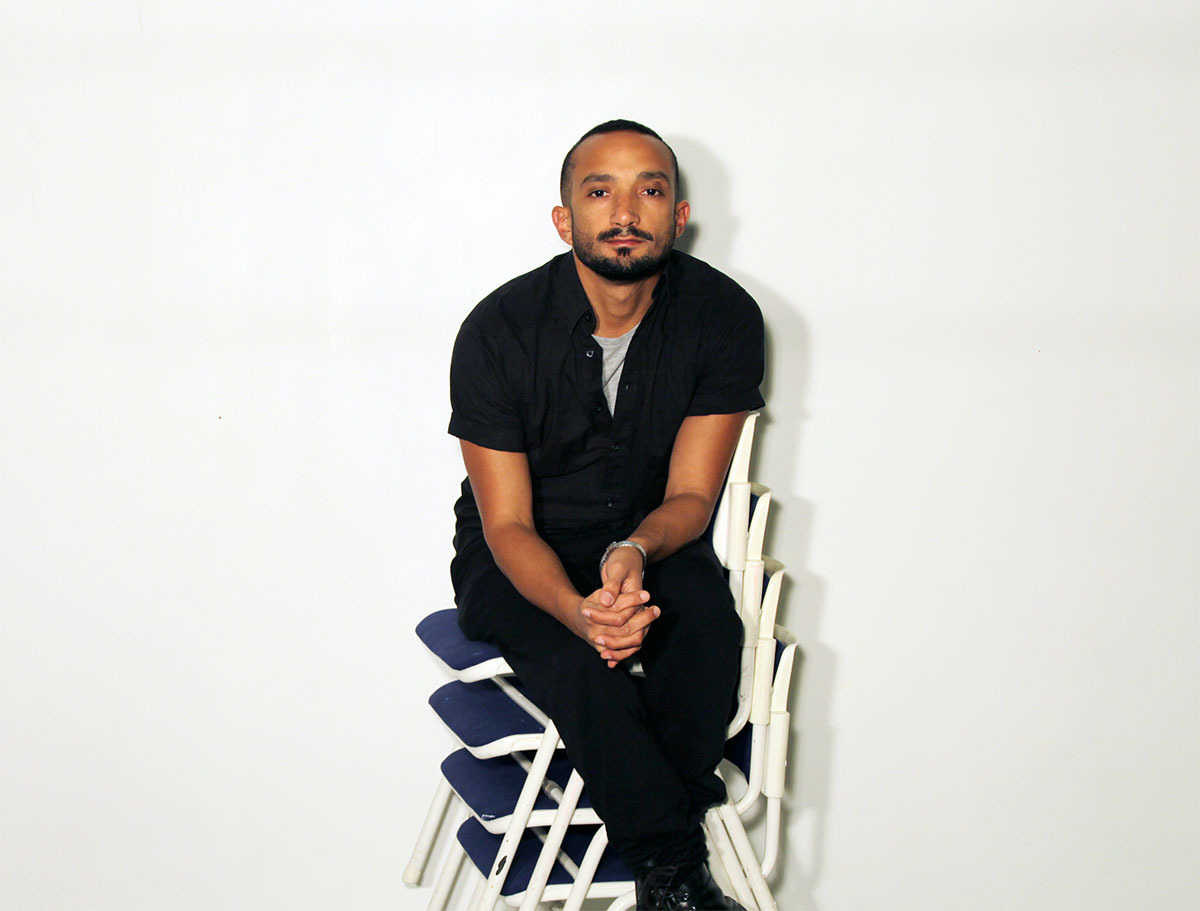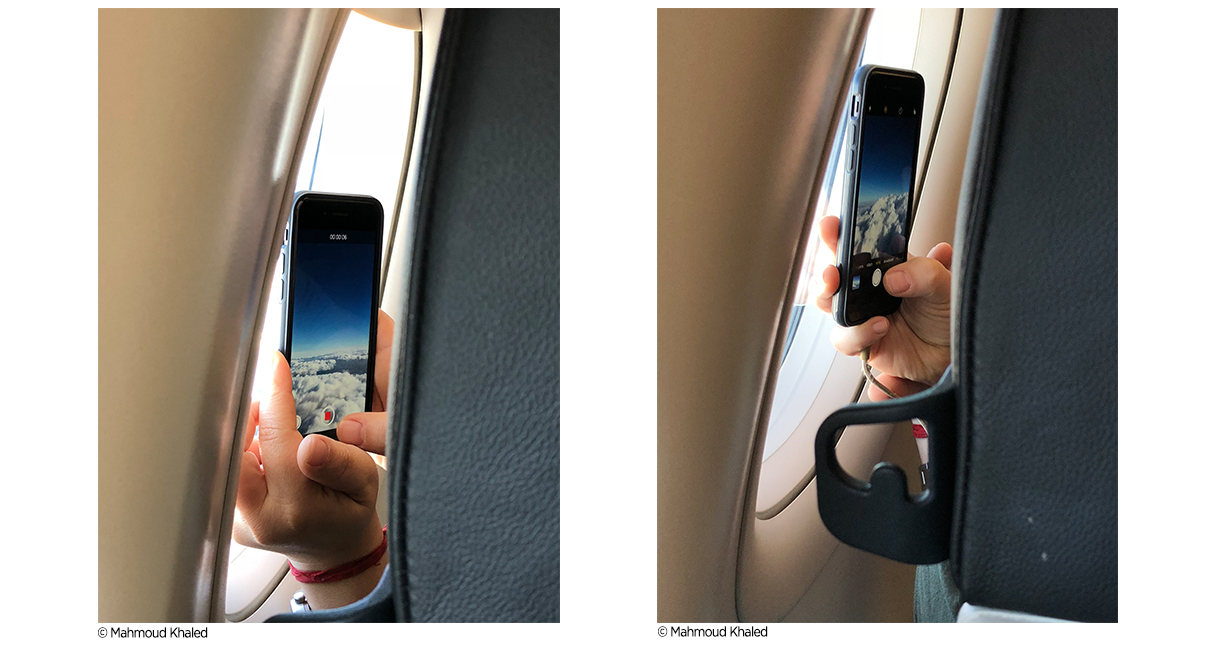Mahmoud Khaled
8. Januar 2019

© Mahmoud Khaled
8. Januar 2019
»On October 1st I was flying from Paris to Barcelona, and I luckily managed to get a window seat on an early afternoon flight where I was able to enjoy the spectacular compositions of the white clouds with bits and pieces of the blue Mediterranean underneath it. Scenes like that are normally very seductive for me to constantly turn on my phone and capture many photos without thinking much about why am I taking this amount of pictures of generic scenes from the plane, but this time I witnessed the hands of the fellow passenger sitting on the window seat in front of me turning the camera of her/his phone on to capture images and videos of the view we (unintentionally) share together from our window seats. At this moment I realized that photography is not a medium for me anymore, it became now an act, a social and technological behavior, performative and transformative.

We take images because we feel the urge of using the technological pieces we all have in our pockets, and we feel the urge of doing the act of photographing whatever happening around us. So now the composition that consists of the hands and the phone of my fellow passenger with the image of the clouds on the screen, a few moments before being captured became more interesting for me than whatever composition I will try to take from that window next to me by my phone.
I think in the future, photography will fade out into a super immaterial and normalized act that is as important as breathing and seeing, and this will happen as fast as technology will allow it to happen in 2050, and based on what we have in our pockets now, we know that the radical future is coming very soon.«
Mahmoud Khaled (b. 1982) studierte Bildende Kunst an der Alexandria University in Ägypten und an der Trondheim University in Norwegen. Sein Werk umfasst Video, Fotografie, Skulptur, Installation, Sound und Text. Seine Arbeiten wurden in zahlreichen internationalen Einzel- und Gruppenausstellungen gezeigt.